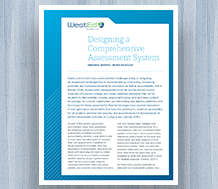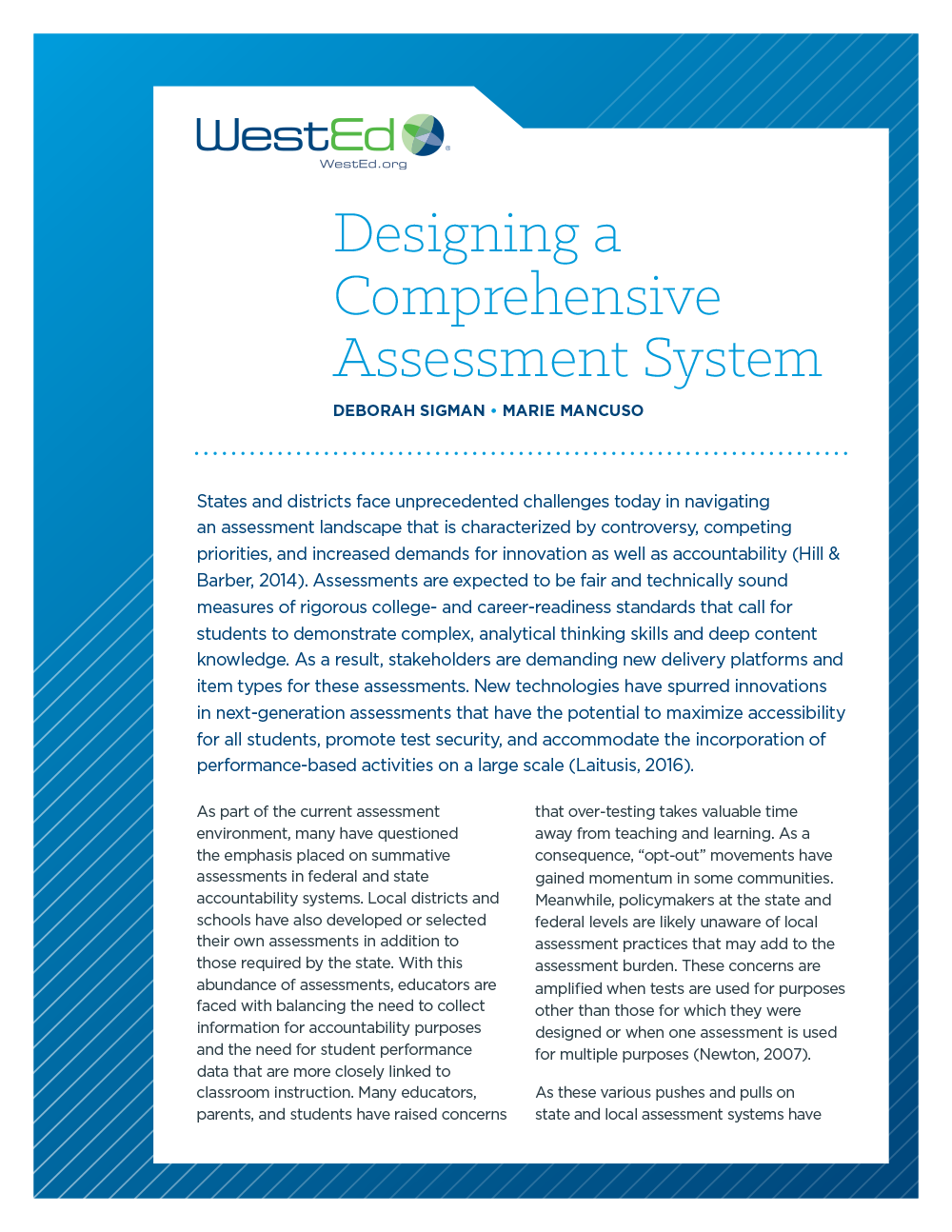Designing a Comprehensive Assessment System: New Resource
Posted on

An assessment system must provide decision-makers at all levels with sound information on which they can base their decisions in support of learning for all students. A comprehensive system includes different types of assessment tools and processes, used for different purposes at different levels of the system: national, state, district, school, and classroom.
This paper, written by WestEd’s Deb Sigman and Marie Mancuso, conceptualizes what a comprehensive system that is balanced and aligned might comprise. It also identifies what actions states, districts, and schools can take to create a comprehensive assessment system.
Visit the Designing a Comprehensive Assessment System resource page to learn more and download your copy.



